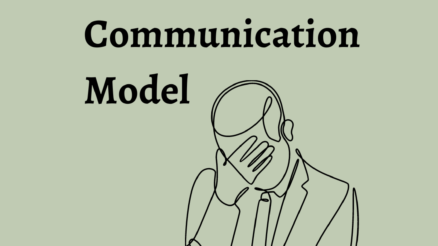Nudge theory, first introduced by behavioral economists Richard Thaler and Cass Sunstein in their 2008 book “Nudge: Improving Decisions About Health, Wealth, and Happiness,” is a approach that uses subtle cues to encourage individuals to make certain choices.
This theory has been applied to various fields, including business, where it is used to influence consumer behavior.
Businesses use nudges to influence consumer decisions by making certain options more appealing or more accessible.
By understanding the psychology behind nudges, businesses can create subtle changes that can lead to big results.
In this blog post, we will explore the science of nudging, how businesses use nudges to influence consumer behavior, and how you can implement nudges in your own business.
Nudge Theory – Definition
The theory suggests that small, subtle changes in the environment can lead to significant improvements in behavior, without the need for drastic measures or direct commands. Nudge theory is based on the idea that people are inherently biased and that these biases can lead to irrational decision making.
A nudge is a small, subtle change in the environment that alters people’s behavior in a predictable way without prohibiting any options or significantly changing the economic incentives.
The nudge is intended to be easy and inexpensive to avoid, and it is supposed to make the desired behavior more likely, while still giving the individual the freedom to make their own choice.
How Nudge Theory is used in business
Nudge theory is used in business to influence consumer behavior in a subtle way, without restricting choice or significantly changing economic incentives. Businesses can use nudges to make certain options more appealing, more accessible, or more salient, in order to influence consumer decisions. For example, a grocery store might use a nudge by placing healthier food options at eye level in the store, making them more noticeable and more likely to be chosen. This nudge doesn’t prohibit unhealthy food options from being available, but it does increase the likelihood that consumers will choose the healthier options. Another example of using nudge in business, an e-commerce website might use a nudge by showing customers the most popular or most highly rated products first, making them more likely to be purchased.
Nudge theory can be used in a wide range of business applications, including marketing, sales, customer service, and product design. It can help businesses increase sales, improve customer satisfaction, and drive engagement. By understanding the psychology behind nudges and how to design effective nudges, businesses can create subtle changes that lead to big results.
The science of nudging– how nudges work
Nudges work by taking advantage of the cognitive biases that influence human decision making. These biases, such as the tendency to procrastinate or the tendency to stick with the status quo, can lead to irrational decision making.
Nudges work by altering the context in which decisions are made, making certain options more appealing or more accessible, without restricting choice or significantly changing economic incentives.
Nudges can be divided into two types: “choice architecture” nudges and “informational” nudges. Choice architecture nudges alter the way options are presented, in order to influence people’s choices. For example, a grocery store might use a choice architecture nudge by placing healthier food options at eye level in the store, making them more noticeable and more likely to be chosen.
Informational nudges, on the other hand, provide people with more information or feedback to help them make better decisions. For example, an e-commerce website might use an informational nudge by showing customers the most popular or most highly rated products first, making them more likely to be purchased.
Nudges can also be categorized as “libertarian” or “paternalistic”. Libertarian nudges respect people’s freedom of choice, while paternalistic nudges aim to steer people towards what is considered the “best” option. Paternalistic nudges are controversial and they are often criticized for being manipulative, while libertarian nudges are generally considered to be more ethical and respectful of people’s autonomy.
The psychology behind nudges
The psychology behind nudges is rooted in the field of behavioral economics, which is the study of how people actually make decisions as opposed to how they should make decisions based on traditional economic theory.
Behavioral economics has revealed that people are not always rational decision-makers, but rather, they are influenced by a variety of cognitive biases and heuristics. These biases and heuristics can lead to irrational decision making and can be exploited by nudges.
One of the key psychological principles behind nudges is that people are more likely to make a decision based on the default option.
This is known as the “status quo bias,” which refers to the tendency to stick with the current state of affairs, even if there are better options available.
Nudges can take advantage of this bias by making a certain option the default, making it more likely to be chosen.
Another important psychological principle behind nudges is that people are influenced by the way options are framed or presented. This is known as “framing effects,” which refers to the fact that people’s decisions can be influenced by the way information is presented to them.
Nudges can take advantage of this principle by presenting options in a way that makes certain options more appealing or salient.
Nudges also take advantage of our cognitive biases such as procrastination and loss aversion. Procrastination bias refers to the tendency to put things off for later, nudges can take advantage of this by making certain options more immediately available.
Loss aversion refers to our tendency to strongly prefer avoiding losses to acquiring gains. Nudges can take advantage of this by emphasizing the potential losses of not choosing a certain option.
How business use nudges to influence consumer behaviour
Businesses use nudges to influence consumer behavior by making certain options more appealing, more accessible, or more salient. By understanding the psychology behind nudges and how to design effective nudges, businesses can create subtle changes that lead to big results.
One of the most common ways businesses use nudges is through the use of default options. By making a certain option the default, businesses can increase the likelihood that consumers will choose that option. For example, a business might make a certain product the default option on their website, increasing the likelihood that customers will purchase that product.
Another way businesses use nudges is through the use of social norms. Businesses can use cues that indicate what is considered the “normal” or “expected” behavior to influence consumer decisions. For example, a business might use a sign that says “most people pay with card” to influence customers to choose card payment over cash.
Businesses also use nudges to influence consumer behavior by making certain options more salient, or more noticeable. For example, a business might use color-coding to make healthier food options more salient, by making them stand out.
Feedback is another way businesses use nudges to influence consumer behavior. By giving customers feedback on their behavior, businesses can encourage them to make certain choices. For example, a business might use a loyalty program that rewards customers for making healthier choices, encouraging them to make healthier choices in the future.
Examples of successful nudge campaigns in business
There are many examples of successful nudge campaigns in business that have been used to influence consumer behavior. Here are a few examples:
- Default savings: ING Direct, a Dutch bank, increased their savings rate by 80% by simply changing their savings account from an opt-in to an opt-out system. Customers were automatically enrolled in a savings plan, but could opt-out if they chose to.
- Healthier food options: A school district in the United States increased the number of students choosing healthier food options by 25% by simply moving the healthier food options to the front of the lunch line.
- Energy conservation: A hotel in California increased their energy conservation by 33% by simply placing a card in guest rooms asking them to conserve energy during their stay.
- Organ donation: A number of countries have successfully increased their organ donation rates by using an opt-out system, where people are automatically enrolled as organ donors unless they opt-out.
- Retirement savings: Automatic enrollment in 401(k) plans has been shown to significantly increase participation in retirement savings plans.
- Hand hygiene: A hospital in the United Kingdom increased hand hygiene compliance by doctors and nurses by over 40% by simply placing a sign in the hospital bathrooms reminding them to wash their hand
Potential ethical concerns with using nudges in business
While nudges can be effective in influencing consumer behavior, there are potential ethical concerns with using them in business.
One concern is that nudges may be manipulative, and that they can be used to exploit people’s cognitive biases and heuristics for the benefit of the business, rather than for the benefit of the consumer. This can lead to consumer decisions that are not in their best interest, and can undermine their autonomy and freedom of choice.
Another concern is that nudges may disproportionately affect vulnerable populations, such as the elderly, the low-income, or those with limited literacy or numeracy skills. These populations may be more susceptible to the influence of nudges, and may not have the resources or knowledge to opt out of the behavior being nudged towards.
Another concern is that nudges can be used to influence consumer behavior in ways that are harmful to the environment or to public health. For example, a business might use a nudge to encourage people to purchase more products, even if it leads to more waste or pollution.
Finally, there is the concern that the use of nudges may be used to justify a lack of regulation or oversight, allowing businesses to operate without accountability for the potential negative consequences of their actions.
How to identify opportunities for nudges in your business
Identifying opportunities for nudges in your business can be done through various methods, such as:
- Conducting surveys or focus groups: Surveys and focus groups can provide valuable insights into consumer behavior and decision making. This can help identify areas where nudges might be effective in influencing consumer behavior.
- Analyzing data: Data analysis can reveal patterns in consumer behavior that might be exploited by nudges. For example, data analysis might reveal that customers are more likely to purchase a certain product at a certain time of day, which could be used to create a nudge that makes that product more salient at that time.
- Observing consumer behavior: Directly observing consumer behavior can provide valuable insights into how they interact with products and services, and can reveal opportunities for nudges.
- Identifying pain points: Identifying pain points in the customer journey, such as long wait times or confusing navigation, can reveal opportunities for nudges that make the experience more seamless and efficient.
- Benchmarking: Benchmarking against competitors and best practices can provide valuable insights into what nudges are working well in the industry, and can help identify opportunities to replicate their success.
Best Practices for Designing and Implementing Nudges
Here are some best practices for designing and implementing nudges in your business:
- Understand the psychology behind the behavior you are trying to influence: Understanding the cognitive biases and heuristics that influence consumer behavior is essential for designing effective nudges.
- Make the desired behavior easy: Nudges are most effective when they make the desired behavior easy and convenient to execute.
- Make the nudge salient: Make sure the nudge is noticeable and salient, so that it stands out and captures the attention of consumers.
- Be transparent: Be transparent about the use of nudges and explain the rationale behind them, so that consumers understand the reasoning behind the nudge and can make informed decisions.
- Test and measure: Test your nudges on a small scale before implementing them widely, and measure their effectiveness to determine if they are having the desired impact.
- Respect autonomy and choice: Respect the autonomy and freedom of choice of your customers, and ensure that your nudges don’t restrict choice or force a certain behavior.
- Consider ethical concerns: Be mindful of the potential ethical concerns that can arise with the use of nudges, such as manipulation, disproportionately affecting vulnerable populations, promoting harmful behaviors and undermining regulation.
- Continuously monitor: Continuously monitor and evaluate the effectiveness of the nudges, and make adjustments as necessary.
Measuring the Effectiveness of Nudges
Measuring the effectiveness of nudges is essential to determine if they are having the desired impact and to make adjustments as necessary. Here are some methods for measuring the effectiveness of nudges:
- A/B testing: A/B testing is a method where two versions of a nudge are tested against each other, with one version being the control group and the other being the experimental group. This allows for a direct comparison of the effectiveness of the nudge.
- Surveys and focus groups: Surveys and focus groups can be used to gather feedback from consumers on their experience with the nudge and their perceptions of the behavior being influenced.
- Data analysis: Data analysis can be used to track changes in consumer behavior before and after the implementation of the nudge. This can provide insights into the effectiveness of the nudge and help identify any unintended consequences.
- Randomized control trials: Randomized control trials (RCTs) are a method for measuring the effectiveness of a nudge by randomly assigning a group of people to receive the nudge and comparing the results to a control group that does not receive the nudge.
- Long-term monitoring: It is important to monitor the effectiveness of the nudge over a long period of time to ensure that the desired behavior change is sustained.
Final Words
Nudge theory is a powerful tool that can be used by businesses to influence consumer behavior in a subtle way, without restricting choice or significantly changing economic incentives. By understanding the psychology behind nudges and how to design effective nudges, businesses can create subtle changes that lead to big results.



